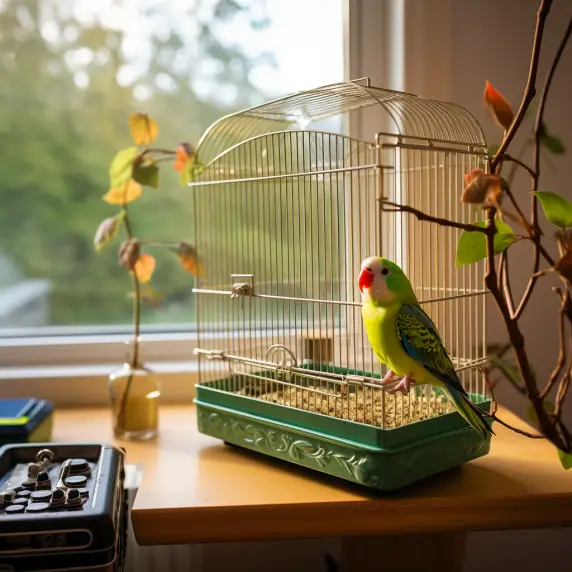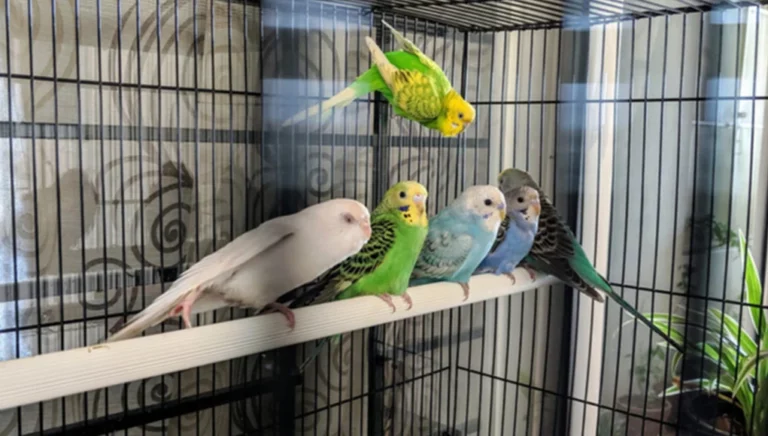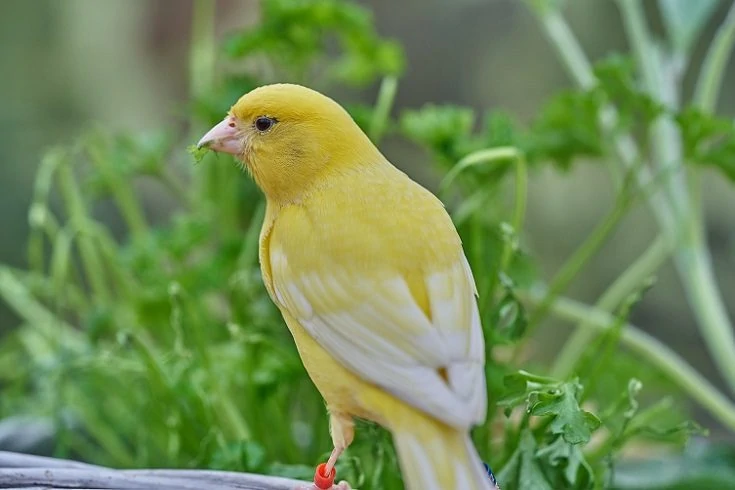The Ultimate Guide to Setting Up a Parakeet Cage
When it comes to pet care, setting up a parakeet cage is a crucial step that ensures the health, safety, and happiness of your feathery friend. Providing an ideal living environment for your parakeet involves choosing the perfect cage, arranging it effectively, and maintaining it properly.
Setting up a parakeet cage involves careful consideration of cage selection, ideal placement, cage furnishing, maintenance, and additional care guidelines. The process impacts not just your parakeet’s physical health, but also its psychological well-being.
Key Takeaways:
- The right cage selection makes a difference in your parakeet’s comfort and safety.
- Proper cage placement in your home can impact the bird’s interaction and tranquility.
- Furnishing the cage appropriately enhances your parakeet’s mental stimulation and happiness.
- Regular maintenance ensures a clean and healthy environment for your pet.
- Additional care guidelines, like considering light, temperature, and noise factors, can improve your parakeet’s overall life quality.
Selecting the Ideal Cage for Your Parakeet
Choosing the perfect home for your parakeet is not a decision to take lightly. Your feathered companion will spend a significant amount of time in their cage, so it’s essential that it suits their needs perfectly.
When it comes to cage material and construction, durability, safety, and ease of cleaning are key considerations. Stainless steel cages are a popular choice due to their sturdiness and resistance to corrosion. On the other hand, avoid painted cages as they can chip and be harmful if ingested by the bird.
Next, consider the dimensions and space of the cage. As a general rule, bigger is always better when it comes to bird cages. Parakeets are active birds that appreciate ample space to fly, climb, and play.
A large cage also allows you to add more perches, toys, and accessories to enrich your bird’s environment. The minimum cage size recommended for a single parakeet is 18x18x18 inches, but don’t hesitate to go larger if space allows.
Paying attention to design features can significantly impact your bird’s safety and ease of cage maintenance. Look for a cage with a secure door that your parakeet cannot easily open. Also, a removable bottom tray is helpful for ease of cleaning.
Bar spacing is another important consideration – for parakeets, the bars should be no more than 1/2 inch apart to prevent the bird from getting its head stuck.
Lastly, you have the option to buy a retail cage or construct a DIY cage. While a store-bought cage provides convenience and meets the standard requirements, a DIY cage allows you to customize the size, design, and features to your bird’s specific needs.
If you opt for a DIY cage, ensure you use bird-safe materials and check for potential hazards like sharp edges or loose parts.
If you’re in need of inspiration, there are countless homemade budgie cage setup ideas available online. Remember, the ultimate goal is to create a cage setup that promotes your parakeet’s physical health and mental well-being.

Furnishing Your Parakeet’s Cage
Once you’ve chosen the ideal cage, the next step is to turn that bare space into a thriving environment that caters to your parakeet’s instincts and preferences.
The Essentials for a parakeet cage include perches, food, and water dishes. Perches are not just for standing; they also provide an exercise opportunity for your bird. Consider providing a variety of perch sizes and materials to mimic a more natural environment and promote foot health.
Food and water dishes should be sturdy, easy to clean, and difficult for the bird to tip over. Ensure these dishes are located away from perches to prevent contamination with bird droppings.
Enrichment Toys play a vital role in a parakeet’s life by providing mental stimulation and preventing boredom. Parakeets are intelligent and active birds that benefit from a range of toys including puzzle toys, mirrors, bells, and climbing structures.
Rotate the toys regularly to keep your parakeet’s environment exciting and engaging.
Adding Natural Elements such as fresh branches or bird-safe plants can contribute to a more stimulating and comfortable environment. These elements not only offer additional perching options, but they also bring a bit of the wild into your bird’s home, which can be great for their mental well-being.
When it comes to the Arrangement of these items, there is no one-size-fits-all rule. However, it’s important to place perches and toys at different heights to encourage climbing and flying.
Also, make sure that the food and water dishes are easily accessible, and that the toys do not overcrowd the cage or restrict your parakeet’s movement. Remember, your goal is to create a home for your parakeet that is not only fun and engaging but also safe and comfortable.
What to Put on the Bottom of a Bird Cage
While many people might overlook the importance of the cage base, it plays a crucial role in your parakeet’s health and the ease of cage maintenance. What you put at the bottom of the cage can impact cleanliness, odor control, and even the bird’s foot health.
When it comes to Material Options, several choices work well for parakeet cages. Newspaper is a commonly used material, largely because it is cheap, absorbent, and easy to change.
However, paper towels, butcher paper, or commercially available cage liners are also suitable. Avoid using materials like cat litter, corn cobs, or wood shavings as these can cause respiratory issues or pose ingestion risks.
The Health Implications of the base material cannot be understated. Materials that create dust can irritate your bird’s respiratory system. On the other hand, a smooth surface like that of a bare plastic tray might not provide enough traction, potentially leading to foot issues.
Whatever you choose, make sure it does not pose a risk to your bird’s health.
Cleaning the cage base is an essential part of bird ownership. A clean cage base prevents the build-up of bacteria and the spread of diseases. Depending on the base material you choose, you might need to clean it daily or every other day.
Always ensure the base is thoroughly dry before placing it back in the cage to prevent mold growth.
Remember, the goal of selecting the right base material and maintaining its cleanliness is to create a healthier, happier home for your parakeet.
After all, a clean bird is a happy bird!
Location, Location, Location: The Art of Cage Placement
The placement of your parakeet’s cage can greatly impact their sense of security and overall happiness. Finding the perfect spot involves considering several factors such as light, noise, temperature, and interaction with the family.
When it comes to Lighting, parakeets require a natural day-night cycle to remain healthy. Placing the cage near a window can provide natural light; however, make sure there are no drafts, as parakeets are sensitive to sudden changes in temperature.
At night, parakeets need darkness for restful sleep. If the cage is in a commonly used room in the evening, consider covering the cage or moving it to a quieter room at night.
Noise Levels also play a crucial role in cage placement. While parakeets enjoy some level of ambient noise, too much noise or sudden loud sounds can stress them. Avoid placing the cage near loud appliances, busy areas, or rooms with high foot traffic.
Considering the Temperature is essential as parakeets are sensitive to changes in temperature. Avoid placing the cage near air conditioning vents, heaters, or drafty windows. The ideal temperature for parakeets is around 65-80°F.
Lastly, it’s important to consider Interaction and Safety. Parakeets are social creatures and enjoy being where the action is, so place the cage in a room where your family spends a lot of time.
However, ensure the cage is in a secure and safe area, out of reach from other pets, and away from toxic fumes or plants. The cage should be placed at eye level to make your parakeet feel secure.
Remember, the goal is to find a location for your parakeet cage where your feathered friend feels safe, comfortable, and part of the family.
Maintaining the Parakeet Cage
Proper maintenance of your parakeet’s cage is not just about cleanliness—it’s about ensuring the continued health and happiness of your pet. A clean cage reduces the risk of diseases and contributes to a more enjoyable living environment.
Daily Cleaning Tasks should include changing the cage baselining, cleaning food and water dishes, and wiping down any soiled areas. This not only keeps the cage clean, but it also gives you a chance to monitor your parakeet’s health through changes in droppings or eating habits.
Weekly Cleaning Tasks usually involve a deeper cleaning. This may include washing all cage accessories, scrubbing down the bars of the cage, and cleaning hard-to-reach areas. Be sure to use bird-safe cleaning products and thoroughly rinse everything before returning it to the cage.
Maintenance also involves Inspecting the Cage and Accessories regularly. Over time, toys can become damaged, perches can wear out, and the cage itself might suffer from wear and tear. Regular inspections help you spot these issues early and replace or repair items as needed.
Lastly, consider having a Large Bird Cage Setup on hand. This can be very useful during cage cleaning times or if you’re introducing a new parakeet to your home. A large cage provides more space for multiple parakeets and can also act as a temporary home for your bird during cage cleaning or repairs.
A consistent maintenance routine not only ensures a clean and healthy environment for your parakeet, but it also shows your bird that you care for their well-being.
Additional Insights for Optimal Cage Setup
While the basics of setting up a parakeet cage are crucial, there are additional factors that can significantly enhance your bird’s quality of life. These insights go beyond the essentials and aim to provide a more enriched environment for your parakeet.
Considering Your Parakeet’s Perspective involves observing your bird’s behavior and preferences. Each parakeet is unique and may have individual likes or dislikes. Some birds may prefer certain toys, perches, or cage locations over others. Paying attention to your bird’s behavior can help you fine-tune the cage setup to better suit your parakeet’s needs.
Varied Diet Placement is another aspect to consider. Parakeets, in their natural habitat, would spend a significant amount of time foraging for food. You can replicate this behavior by placing food items in different parts of the cage or using foraging toys.
This not only keeps your bird mentally stimulated but also encourages physical activity.
Parakeet Pairing and Grouping can greatly influence cage setup. If you have more than one parakeet, ensure the cage is large enough to accommodate all birds comfortably. Provide multiple feeding and drinking spots to prevent competition.
Furthermore, observe the birds’ interactions as some parakeets might need separate cages to prevent bullying.
Night Safety and Comfort is an often-overlooked aspect of parakeet care. Parakeets require undisturbed sleep at night. This might involve moving the cage to a quieter room, using a cage cover to block out light, or adding a special sleeping perch.
These additional insights take parakeet care to the next level, ensuring your bird has not just a cage, but a home where it feels safe, comfortable, and happy.
Related:
FAQs: Addressing Your Queries on Parakeet Cage Setup
What is the best way to set up a parakeet cage?
The best way to set up a parakeet cage involves several steps. First, select a suitable cage that is spacious, sturdy, and easy to clean. Furnish the cage with essential items like perches, food and water dishes, and a variety of toys. Position the cage in a well-lit, safe, and quiet location. Regular maintenance and cleaning are also crucial. Most importantly, observe your bird’s behavior and adjust the cage setup accordingly to meet your parakeet’s individual needs.
What do you put in the bottom of a parakeet cage?
At the bottom of a parakeet cage, you can use newspaper, paper towels, butcher paper, or commercially available cage liners. These materials are safe for parakeets and easy to clean. Avoid materials that can create dust or pose ingestion risks, such as cat litter, corn cobs, or wood shavings.
How long does it take for parakeets to get used to a new cage?
The time it takes for parakeets to get used to a new cage can vary. Some birds may adjust within a few days, while others may take a few weeks. Providing familiar toys or perches can help ease the transition. Be patient and allow your bird to explore the new space at their own pace.
Should you cover a parakeet’s cage at night?
Yes, covering a parakeet’s cage at night can be beneficial. It can help to block out light and reduce noise, providing a calm and quiet environment for your bird to rest. However, ensure the cover is breathable and doesn’t cause the cage to become too dark or cause temperature changes.
How often should the cage be cleaned?
Daily cleaning tasks include changing the cage baselining and cleaning food and water dishes. A deeper clean of the entire cage and all accessories is recommended weekly. Regular cleaning keeps the cage environment healthy and reduces the risk of diseases.
What materials are unsafe for parakeet cages?
Avoid cages made of or coated with toxic materials like lead or zinc. For cage baselining, avoid materials that can create dust or pose ingestion risks, such as cat litter, corn cobs, or wood shavings.
How can I arrange the cage to promote healthy flying habits?
Arrange perches and toys at different heights to encourage climbing and flying. Leave enough open space for your bird to fly freely. Additionally, consider allowing your parakeet supervised, out-of-cage time in a safe, enclosed room to further encourage flight.
What kinds of toys are safe and enriching for my parakeet?
Safe and enriching toys include those made from bird-safe materials such as wood, rope, and plastic. Puzzle toys, mirrors, bells, and climbing structures are all excellent choices. Remember to rotate the toys regularly to keep your bird’s environment engaging.
How can I ensure the cage is safe from potential predators?
Place the cage in a secure location out of reach from other pets. If the cage is near a window, ensure it doesn’t allow access to outdoor predators. Regularly check the cage for any signs of damage or potential escape routes. Always supervise any interaction between your parakeet and other pets.
Final Thoughts
Setting up a parakeet cage is much more than simply arranging furniture inside a box; it’s about creating a nurturing and stimulating environment that replicates your bird’s natural habitat as closely as possible.
Through thoughtful selection of the cage and its accessories, careful placement, regular maintenance, and keen observation of your parakeet’s behavior, you can provide your feathered friend with a home that promotes their health, happiness, and natural behaviors.
Remember, every parakeet is unique, and the setup that works best will depend on your bird’s individual needs and preferences. With time, patience, and a little creativity, you’ll create the perfect haven for your parakeet to thrive in.
Happy birdkeeping!
References
- PetHelpful. (2023). How To Set Up A Bird Cage For A Parakeet or Cockatiel. [Online] Available at: https://pethelpful.com/birds/How-To-Set-Up-A-Bird-Cage-For-A-Parakeet-or-Cockatiel
- Wikihow. (2023). How to Set Up a Bird Cage. [Online] Available at: https://www.wikihow.com/Set-Up-a-Bird-Cage
- The Happy Chicken Coop. (2023). Setting Up The Bird Cage: A Step-By-Step Guide. [Online] Available at: https://www.thehappychickencoop.com/setting-up-the-bird-cage-a-step-by-step-guide/
- Aquarium Store Depot. (2023). Bird Cage Setup – The Ultimate Guide to Get It Right. [Online] Available at: https://aquariumstoredepot.com/blogs/news/bird-cage-setup






